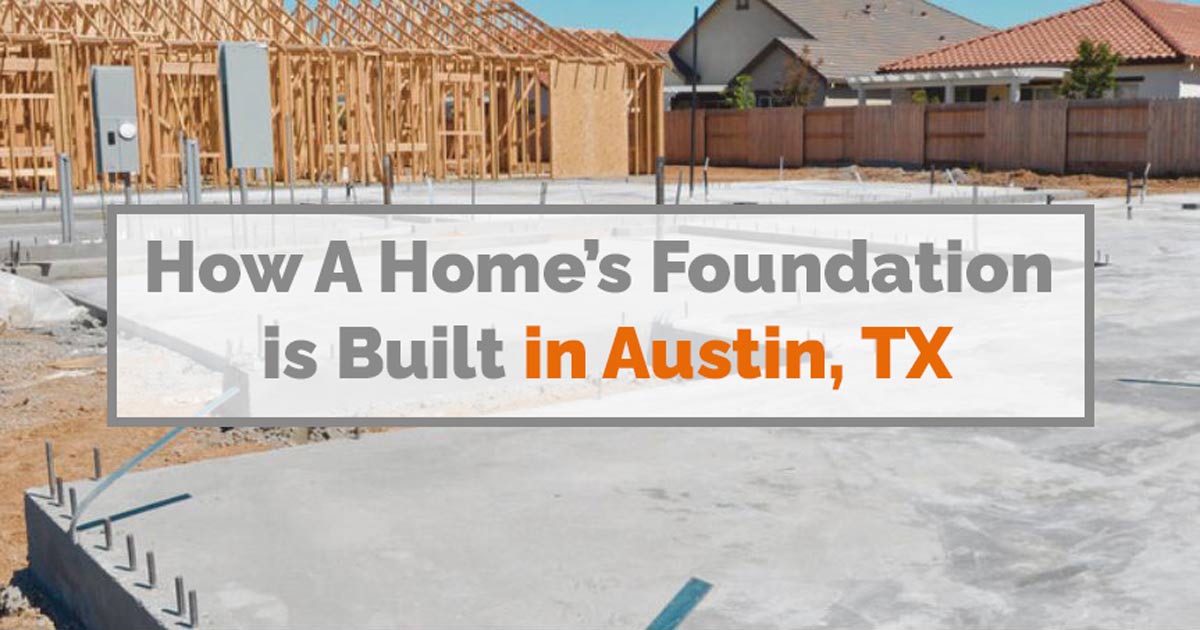512.291.0709
Mon - Fri: 9 AM - 11:30 AM
12:30 PM - 4 PM
June 02, 2023

If you’re building a new home in Austin, Texas, you’ve got a long list of factors to consider. One of the most pressing is determining how the foundation will be built. Austin’s unique soil conditions require a particular approach to ensure long-term stability. Therefore, it’s essential to understand what techniques should be used.
We’ll walk you through the typical process below, explaining what’s behind every step. With this information, you’ll be better prepared to launch your building project and feel confident you’re starting on the right foot.
First and foremost, it's crucial for professional surveyors to assess the building site. This step allows your team to understand your plot’s soil properties and topography, which will determine the type of foundation that should be installed.
Soil testing in Austin is vital, as the city has a varied geological composition, including clay, limestone, and loam. These different soil types have their own varying levels of stability. Therefore, knowing the soil composition helps determine the most suitable foundation type – slab, or pier and beam (and the subtype thereof).
Once the soil testing and survey are complete, your foundation team will have all of the information needed to proceed with building. This is where the process of excavation begins.
Depending on your foundation’s design, a portion of the land may be dug up to make room for the foundation. If you are installing a pier and beam foundation, then individual holes will be dug where the piers are to be inserted. Land-grading may be incorporated into this stage if your plot is not flat, creating an even surface for your foundation to be built upon.
The next step in the process is forming the foundation. Of course, this stage will look a bit different depending on your chosen foundation type.
In either case, the concrete will need to be given enough time to cure and solidify. The time needed for this can depend on the weather. If the conditions are too hot, cold, humid, or dry, special steps may need to be taken.
Special steps can include using curing compounds, damp curing blankets, or water sprinkling to maintain necessary moisture. Your contractor may schedule pouring concrete during the coolest part of the day (such as early morning or late evening) to avoid rapid water evaporation. Unfortunately, Austin’s hot, dry climate will often require using one or more of these measures to safeguard the curing process.
While foundation concrete takes about a month to fully cure, some parts of construction can proceed before then. For example, you may be able to start framing within 7 days, if the curing has progressed on schedule. Your foundation should be about 75% cured at that point.
In Austin, it's essential to consider the weather and rainfall patterns during foundation construction. Rain tends to come in heavy bursts here, meaning that moisture control should be a priority.
Once the foundation is cured and set, your contractor may recommend it be waterproofed to prevent moisture damage. Additionally, a proper drainage system will need to be incorporated to keep water from pooling around the foundation and causing issues down the line.
The final step in the foundation construction process is inspection. A licensed inspector will need to verify that your foundation meets the local building codes and is safe for building a home on top of. This check is essential for making sure your foundation won’t be prone to settling, cracking, or heaving in the future.
If your foundation fails inspection, you’ll be provided with a report that details both the issues and the recommendations. Your contractor will need to go back in and make corrections to the foundation, which may entail adding more reinforcement, or repouring the concrete entirely. Your foundation will need to go through another inspection after the repairs to verify that it is now up to code.
Luckily, all of that hassle can be easily avoided when you choose a reputable contracting team to build your foundation.
Building a foundation in Austin requires a deep understanding of local soil composition, building codes, and weather patterns. It’s not something just any contractor can do! You’ll need to carefully choose your team if you want to see great results.
Douglas Foundation Repair is one of the area’s top specialists in foundation construction. We offer a comprehensive range of services to cater to the unique needs of Austin properties, fulfilled by an experienced and knowledgeable team. Our experts ensure that the entire process goes smoothly, taking care to get every detail right along the way.
Remember, a solidly built foundation sets the stage for a safe and long-lasting home. Seeing that it is well-constructed from the start is one of the best investments you can make to protect your new abode.
Contact us today to get help from experts you can count on. We’ll provide a FREE inspection and quote, complete with our professional recommendations for your situation.